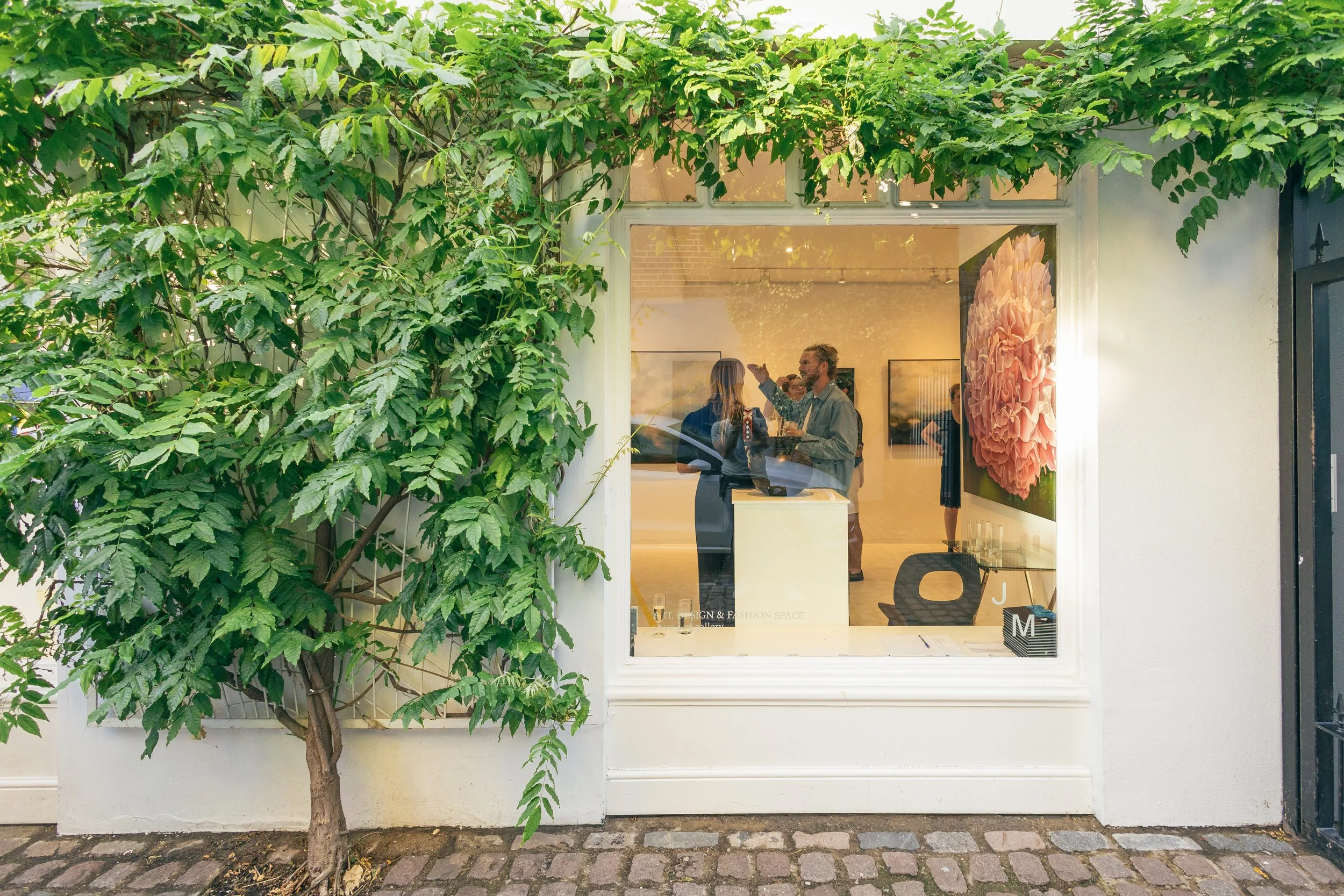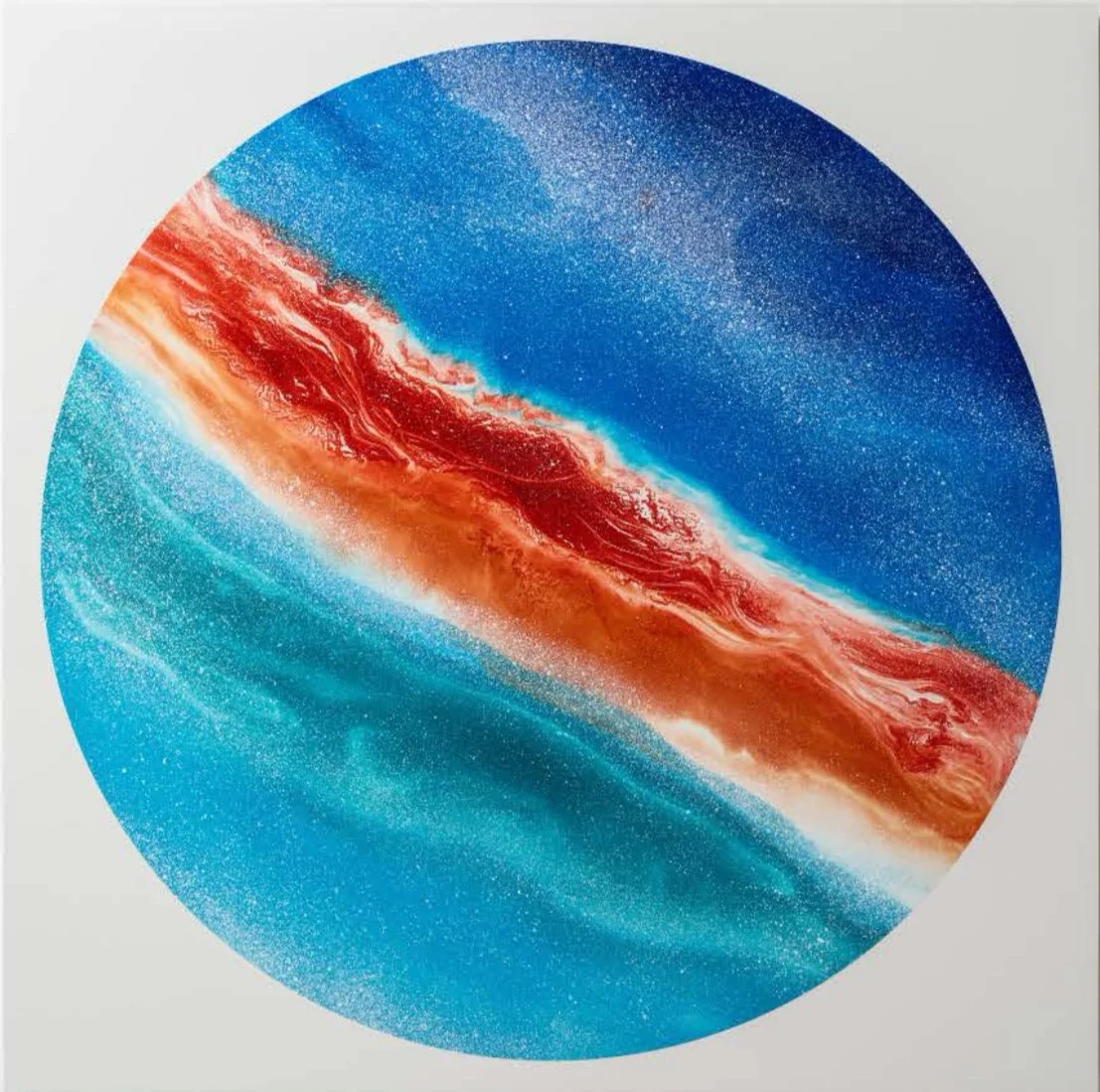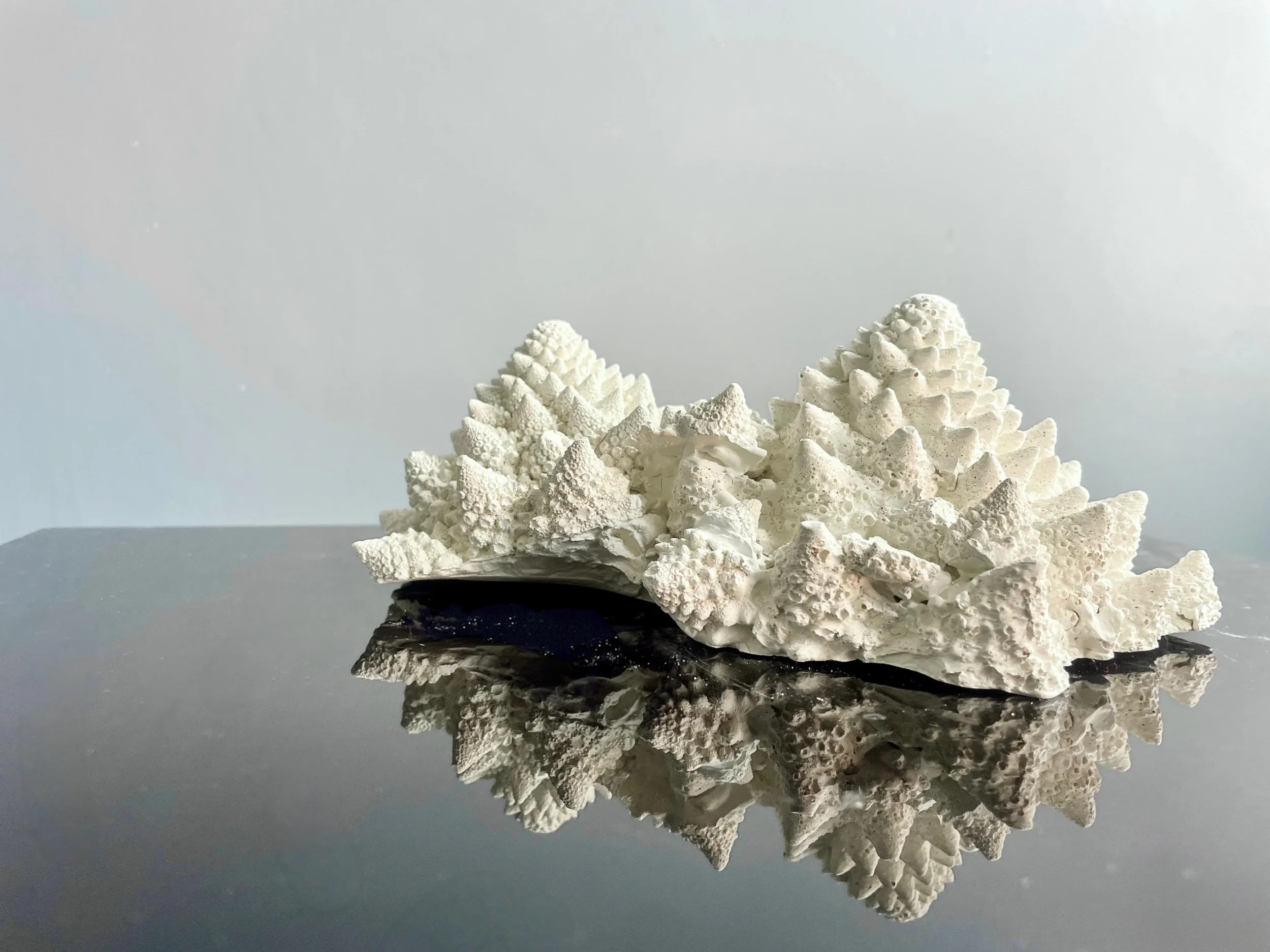Text by BETH MCKENZIE
Offline’ Exhibition © Gallery Les Bois. Photographer: Ryan O’Donoghue.
As London recovers from Frieze week, the art world faces an uncomfortable truth: creativity comes at a cost. Tens of thousands of air miles; ships stacked with shipping crates; a wealth of toxic materials - these are just a few of the many factors involved in the devastating toll that the art world takes on our environment. Gallery Les Bois wants to change that.
Launched last year by Founder and Director Claire-Julia Hill, Les Bois touts itself as London’s first Sustainable Art Gallery, following the likes of The Climate Museum in New York, The Museum of Tomorrow in Brazil, and - closer to home - GroundWork Gallery in King’s Lynn. A Cambridge alumna, Hill’s background in Art History turned more pointedly to ecology upon a stint in Iceland, a country known for its keen interest in sustainability and vulnerability to climate change. Following a period working in contemporary London galleries, Hill soon bit the bullet and launched her own gallery. With a stylish Chelsea headquarters and a principled mission statement, Gallery Les Bois strives to become the “Ethical Art Collector’s Destination”, an aim that sets it apart from the competition.
Founder and Director Claire-Julia Hill, Photographer: Charles Jenkins © Gallery Les Bois.
Whilst major institutions have flirted with the idea of eco-consciousness over the last decade - last year’s ‘Emerging Ecologies’ at MoMA, Tate’s 2021 ‘Power to Change’ programme, or even the Design Museum’s ‘More Than Human’ which wrapped up earlier this month - they rarely go beyond the art’s messaging. They focus more on global commentary of climate change as opposed to considering how their own practices and operations may be contributing to the world’s eventual collapse. In other words, galleries largely fail to “walk the walk” when it comes to sustainability.
Although these institutions dabble in environmentalist exhibitions, few translate those ideals into their own operations — a gap Hill aims to close. Aside from general apathy or negligence, it appears the fear for many galleries is that environmental concerns may take over what was the original intent of the contemporary art space: to showcase high-quality and (perhaps more cynically but unfortunately no less important) investment-worthy art. But Hill is adamant that environmental consciousness and artistic quality are not mutually exclusive.
Left: Artist: John Sabraw, Celestial Chroma S1 1, © Gallery Les Bois. Right: Artist: John Sabraw, Celestial Chroma S1 12, © Gallery Les Bois.
The artists represented by Les Bois strike a balance between sustainable practices and sustainable messaging in such a way that it adds to their aesthetic appeal rather than taking away from it. Take the work of John Sabraw; in the unlikely waterways of Ohio’s abandoned coalmines, Sabraw separates clean water, returning it to the rivers, and refining the pollution into pigments powders, rich enough in colour and vibrancy to rival anything artificial. For quantum physicist turned sculptor, Dr Jasmine Pradissitto, sustainable messaging even extends to scientific breakthroughs, as her use of the now patented NOXORB TM, made from recycled plastics that absorb nitrogen dioxide pollution could be the future of air pollution control.
If figurative art is your thing, Dutch-Colombian duo Volcan have you covered. Along with using salvaged materials in their installation works, their standout series ‘Offline: Refugee Remembrance Wall’ - the focus of their 2024 Venice Biennale exhibit and the namesake for Les Bois’ inaugural exhibition - the pair depict blurred images of migrants overlaid by a loading symbol to evoke the unfortunate realities of being forced out of one’s home only to become undocumented in another country. Their commitment to fighting overconsumption is concurrent with an ability to produce emotionally effective works that provoke and question societal dynamics. If the future of sustainability rests in the hands of the art market, Les Bois proves that we may be in good hands after all.
Artist: Jasmine Pradissitto, Monticulus, Photo courtesy of Jasmine Pradissitto.
As the musician Father John Misty once sang ‘Try not to become too consumed with what's a criminal volume of oil that it takes to paint a portrait’. The artworld has similarly buried its head in the sand when it comes to climate change. We accept that to produce great art and promote it, there is an unavoidable environmental cost that, if we ignore it for long enough, will cease to matter. Sure, you can try not to think about the staggering environmental cost in all this - but you must ask yourself: who will be there to see your art on a dead planet? To truly ‘walk the walk’, Hill pertains that we must take responsibility and make a consistent effort to engage with sustainable practices before it is too late, transforming our understanding of environmental consciousness to become a powerful, curatorial tool rather than an aesthetic constraint. As Hill and her artists show, art’s future may depend not just on what we create — but how responsibly we create it.
‘Offline’ Exhibition © Gallery Les Bois. Photographer: Ryan O’Donoghue.








